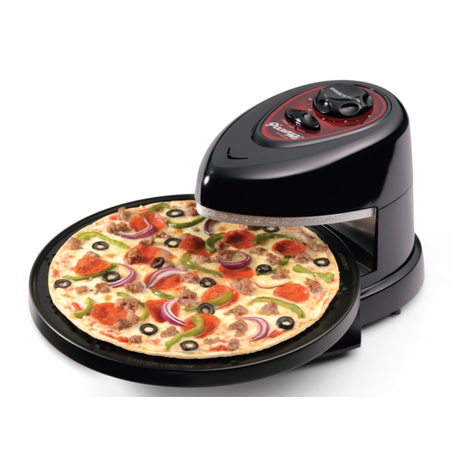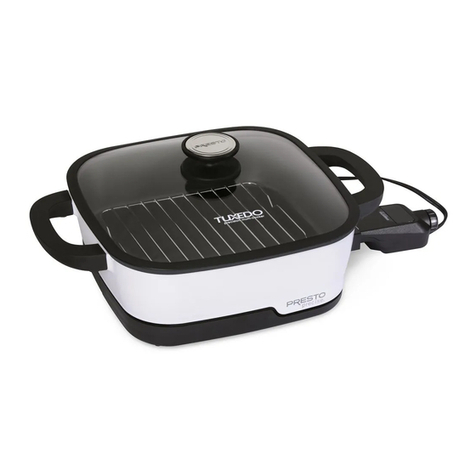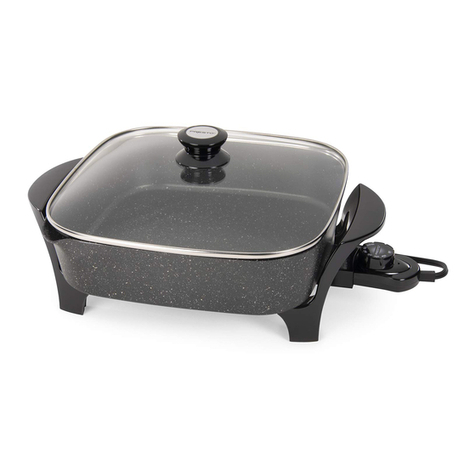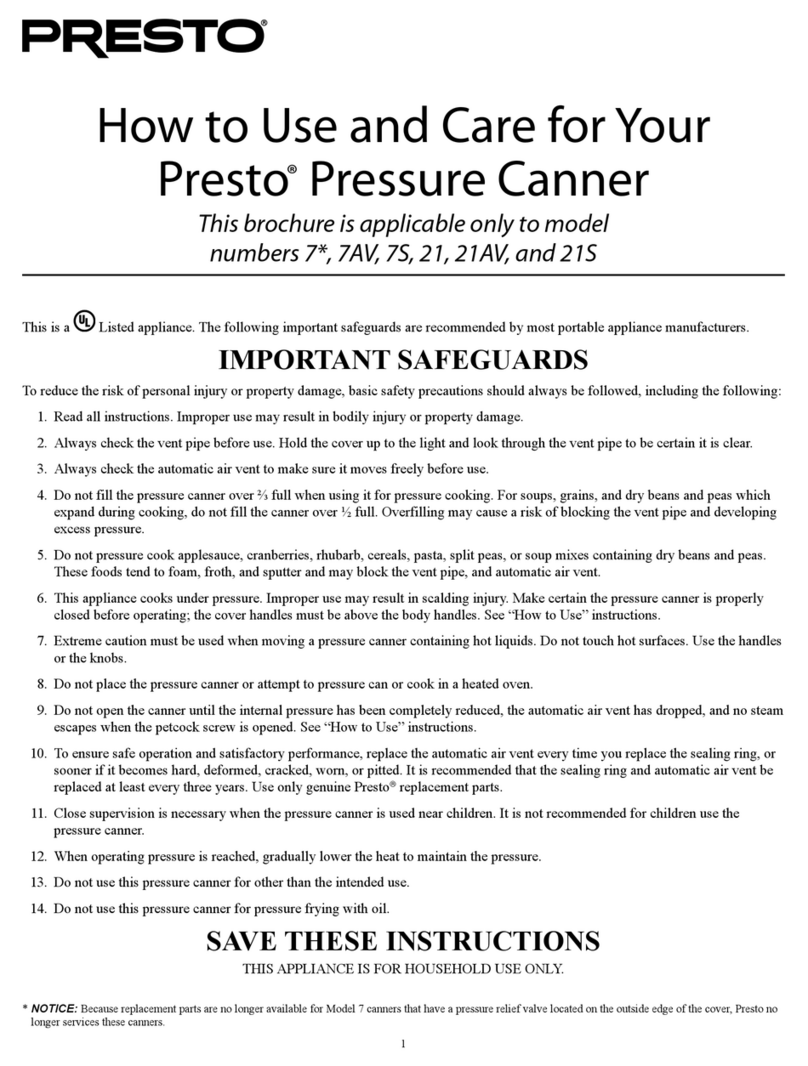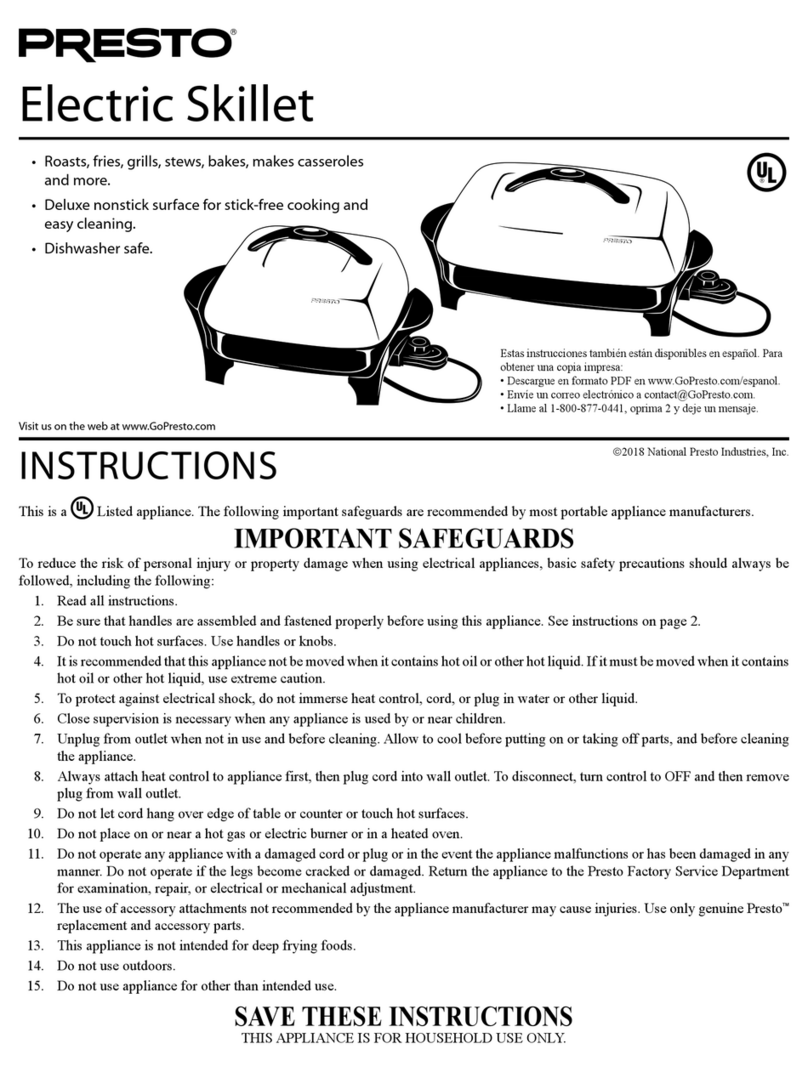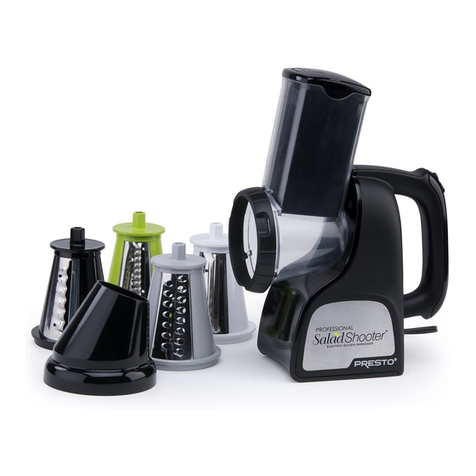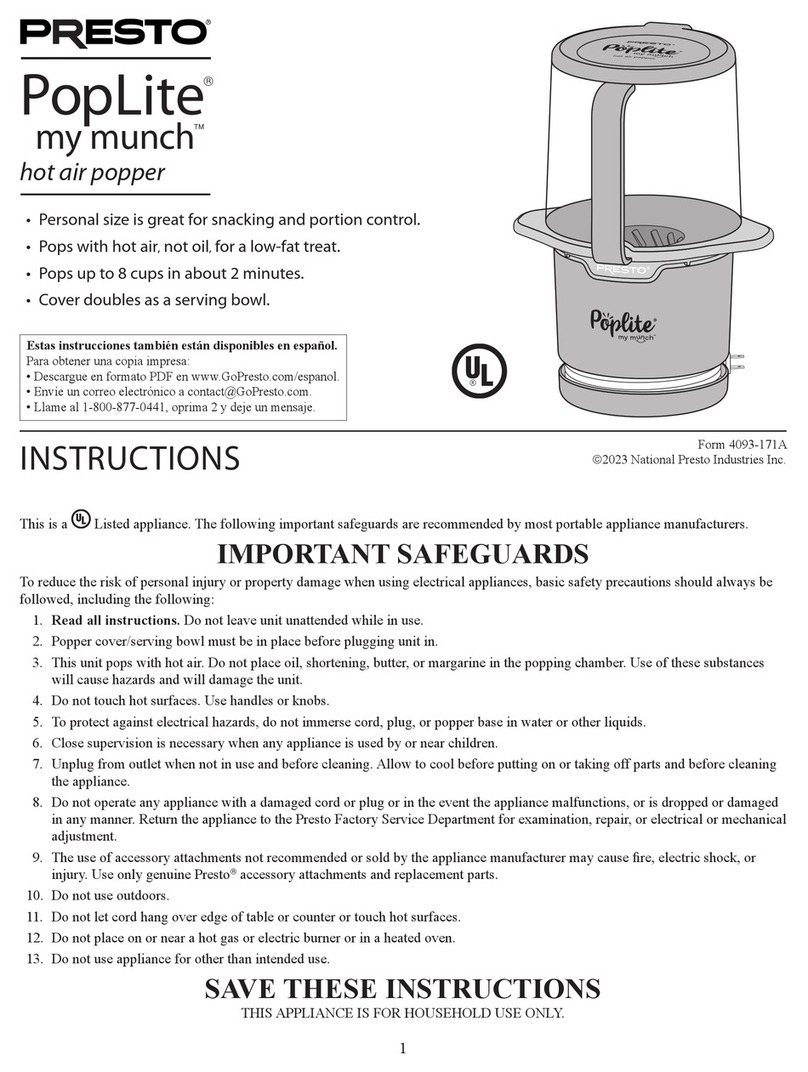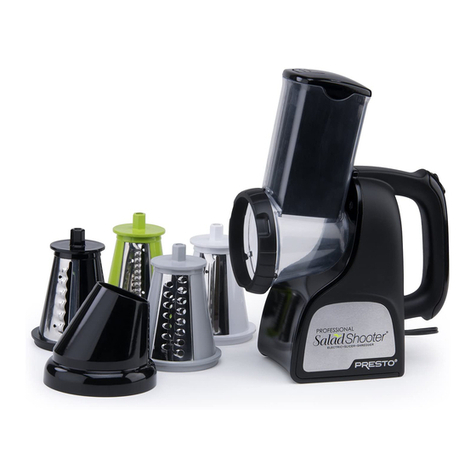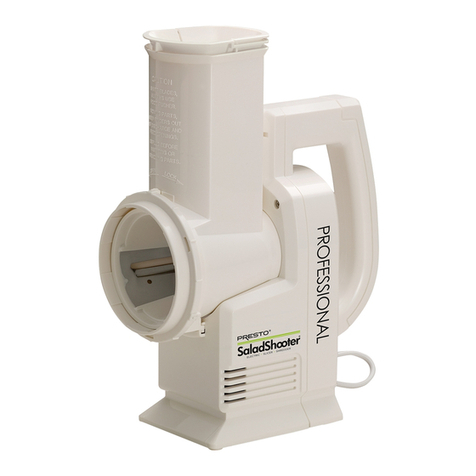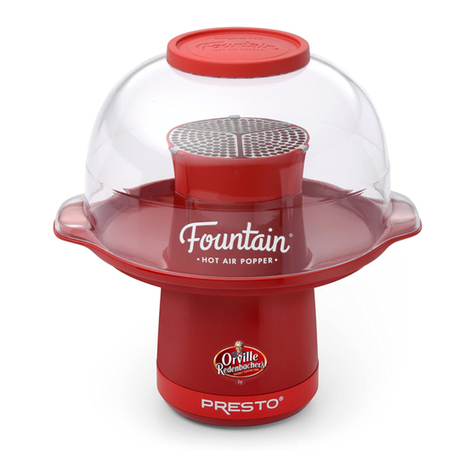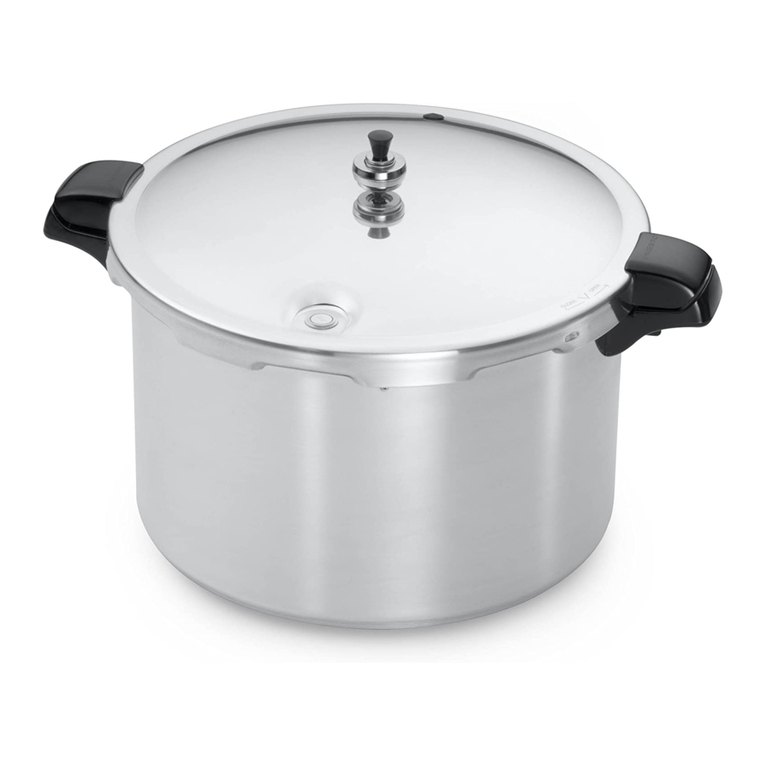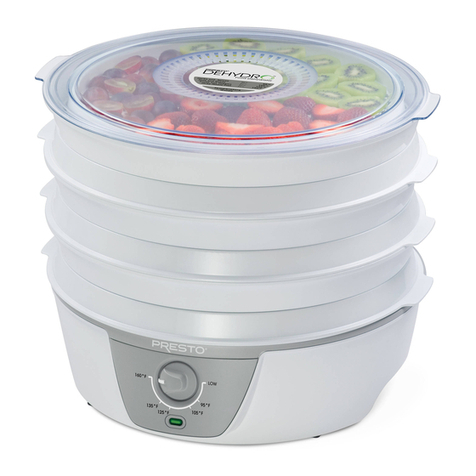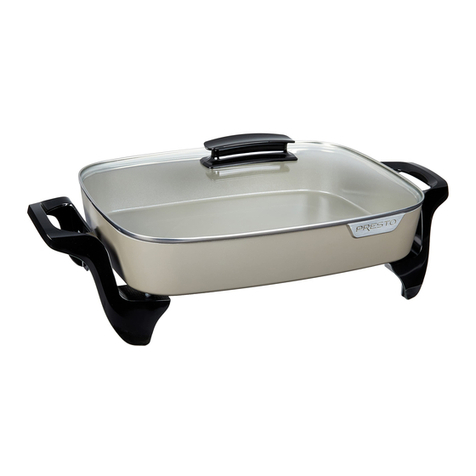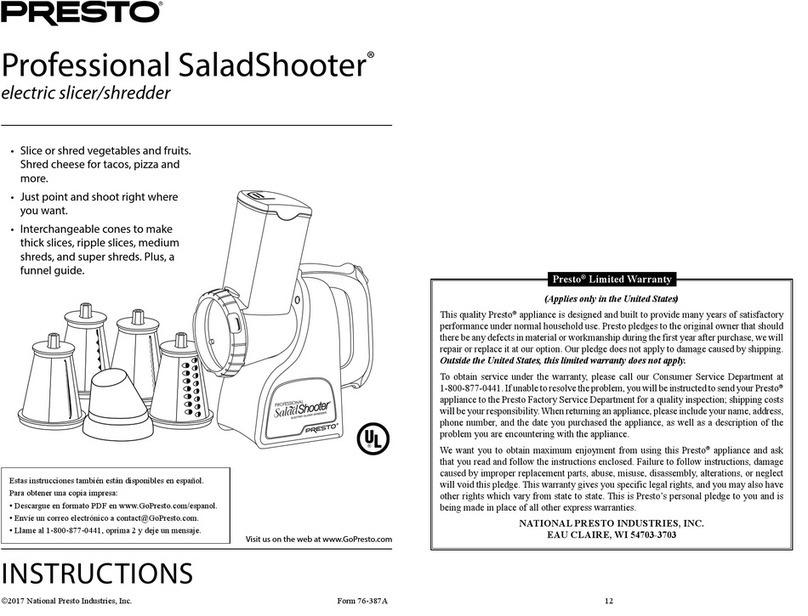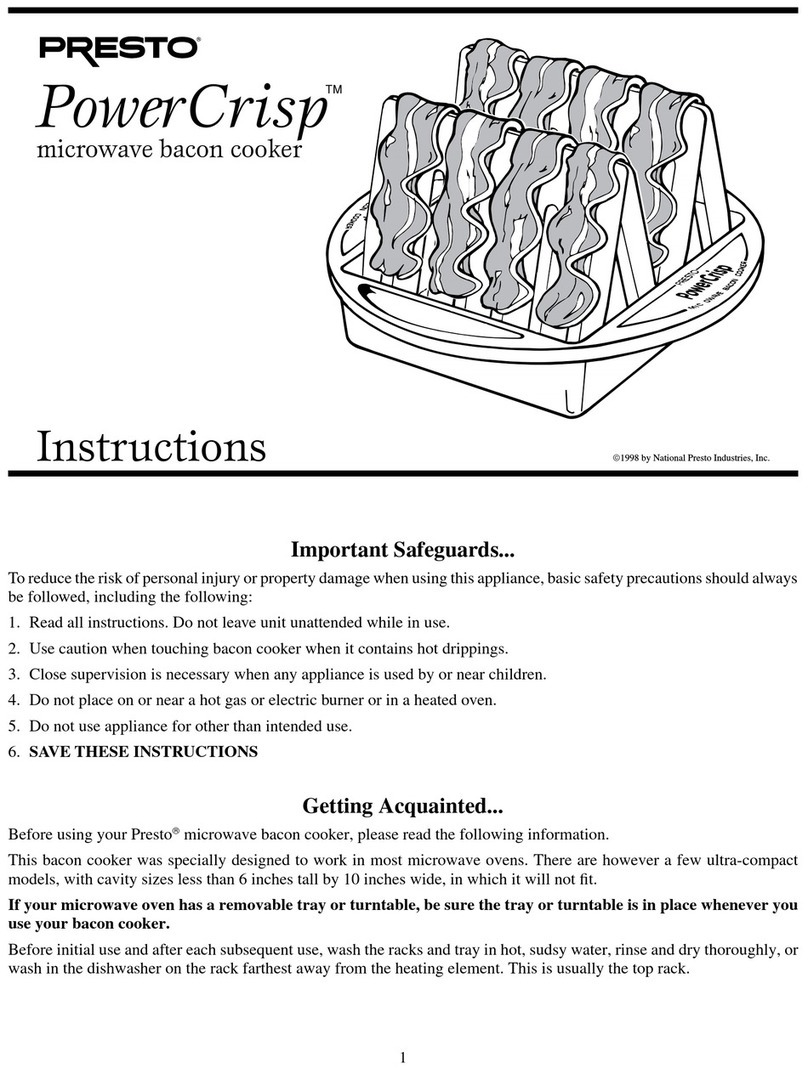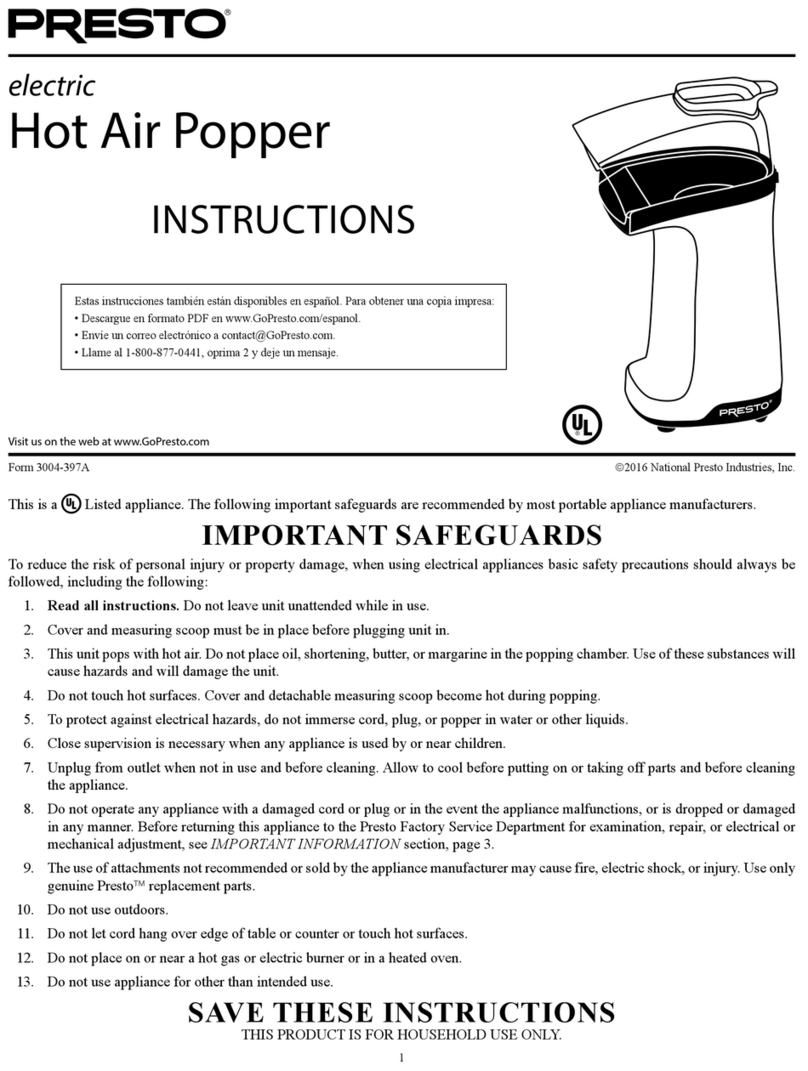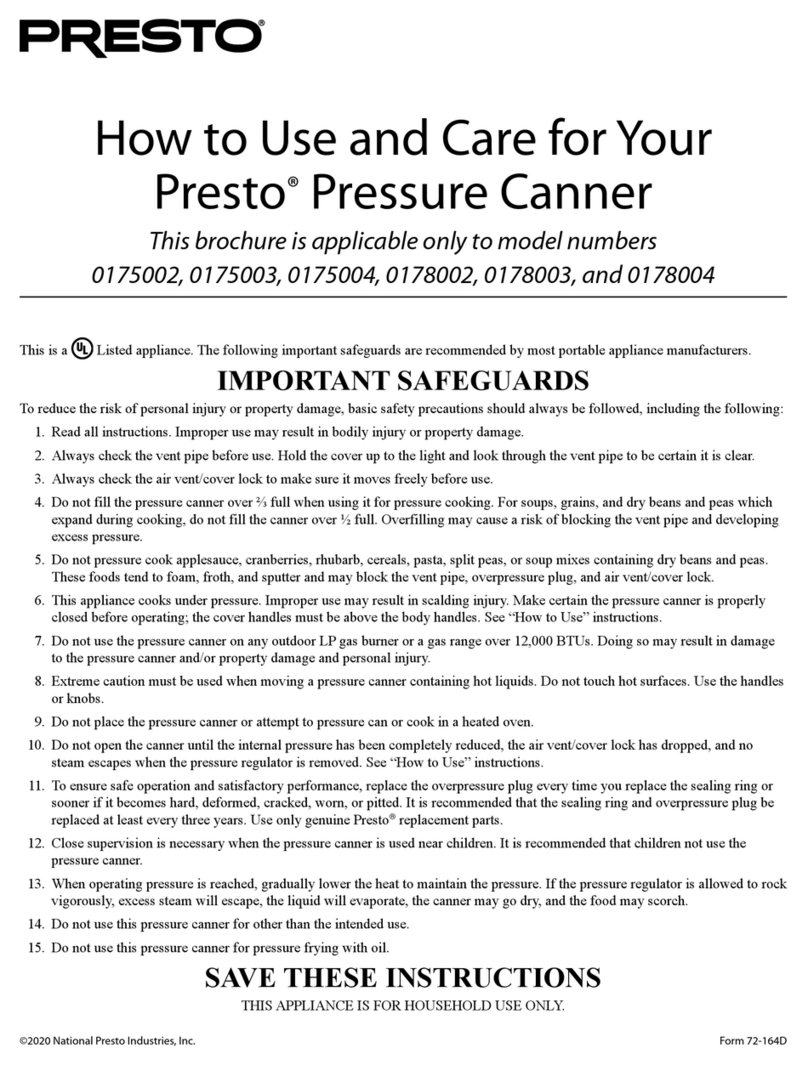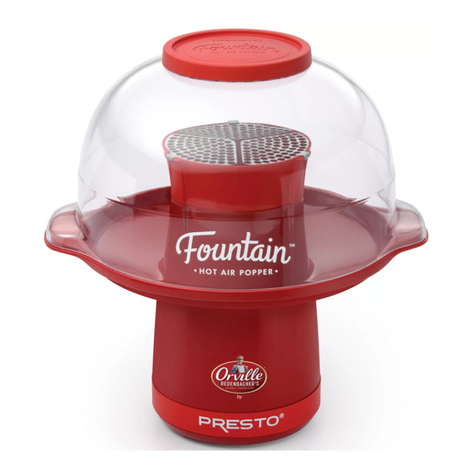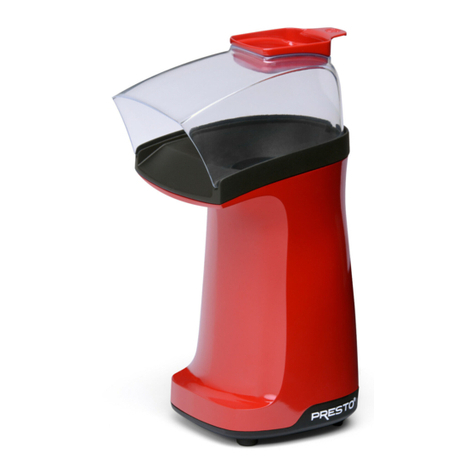9
fruits low in pectin, add another fruit that is high in pectin to improve the texture of
the leather. Fruits naturally high in pectin are apples, apricots, blueberries, cranber-
ries, gs, grapes, peaches, pears, pineapples, and plums. Fruits low in pectin include
cherries, citrus fruits, raspberries, and strawberries. When using a low pectin fruit
with a high pectin fruit, use equal parts of each to produce the best results.
Preparation
Use a Presto™ Fruit Roll Sheet to prepare fruit rolls. Apply a thin layer of vegetable
oil or no-stick cooking spray to the fruit roll sheet. CAUTION! If using cooking
spray, be sure to spray away from the dehydrator base.
Use about 1½ cups of puréed fruit for each fruit roll sheet.
Select ripe or slightly overripe fruit and remove any bruised areas. Wash fruits and
remove peel, seeds, and stems. Cut fruit into chunks and using a food processor or
blender, purée until smooth (applesauce consistency). To get the puréeing process
started, you may need to add approximately 1 tablespoon of fruit juice or water.
If desired, fruit can be pretreated to preserve its natural color. Add 1½ teaspoons of
lemon juice to each 1½ cups puréed fruit. See the Fruit Drying Guide on page 10 to
determine which fruits will benet from pretreatment.
The natural sweetness of fruit is intensied with drying. However, if your preference
is for a sweeter fruit roll, you can add honey, maple syrup, corn syrup, or sugar to the
puréed fruit, if desired. Try different amounts of sweeteners, starting with 1 table-
spoon for each 1½ cups of fruit purée, to nd your preference. Fruit with sweeteners
added will take longer to dry than fruit that is not sweetened.
Canned fruit can also be used to easily make fruit leather. Drain juice from fruit,
saving juice for later use. Place fruit in food processor or blender and purée until
smooth. Applesauce can be used directly from the container.
For frozen fruit, thaw and purée until smooth.
Pour puréed fruit on lightly oiled fruit roll sheet and spread with a spatula to form a
uniform layer about ¼ inch thick. Place fruit roll sheet on dehydrator tray, set tem-
perature to 135°F or 57°C, and begin drying. Average drying time for all fruit rolls is
4 to 7 hours.
Determining Dryness
Acceptably dried fruit leather will be slightly tacky to the touch, but will not indent
when touched in the center. Begin checking the fruit roll after 4 hours of drying. If
drying more than one fruit roll, be sure to check all of the trays. If additional drying
time is needed, recheck every 30 minutes.
While slightly warm, starting from the outer edge, carefully peel the fruit roll from
the sheet. Loosely roll in plastic wrap or waxed paper and follow “Packaging and
Storage” information on pages 6 and 7. For immediate enjoyment, cut in strips or roll
and cut into serving pieces.
NOTE: Remove fruit rolls from sheets prior to cutting them.
